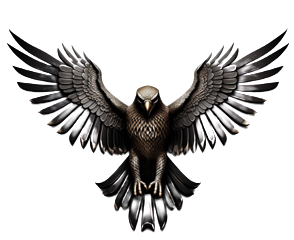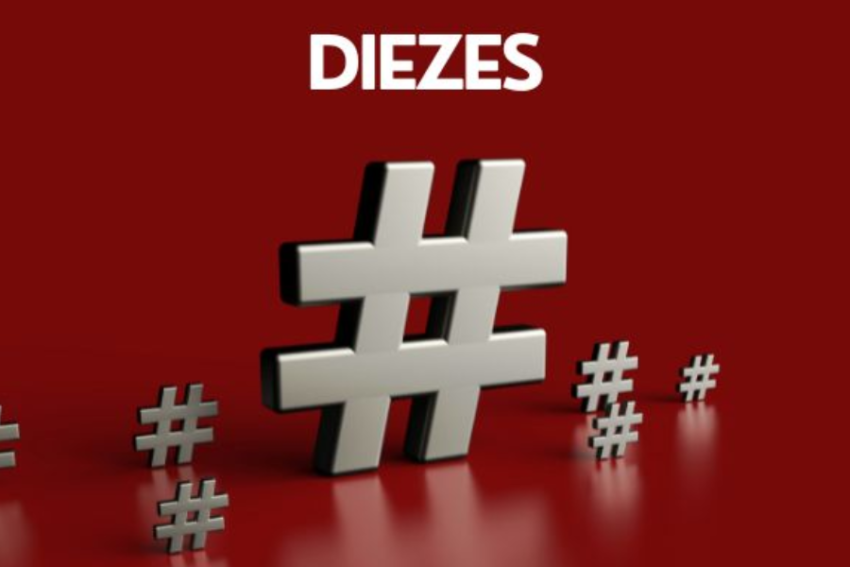The term “dieze” appears in various disciplines, each attributing its own distinct meaning to the word. In the realm of music theory, “dieze” denotes a sharp note, altering the pitch by a semitone. This concept is pivotal in shaping musical compositions and performances, as it precisely adjusts the tonal quality of a note. This article explores the multifaceted nature of “dieze,” highlighting its significance and applications in various contexts, thereby providing a comprehensive understanding of its usage and impact.
Understanding Diezes

Diezes, known as sharps in English, are critical notational symbols in music that signify a note should be elevated by a semitone. Represented by the symbol “#,” diezes play a fundamental role in musical notation and theory. This adjustment is essential for creating precise musical expressions and achieving the intended tonal qualities in a composition. Mastery of diezes is vital not only for musicians but also for anyone delving into the complexities of music theory, as it impacts the interpretation and performance of musical pieces. By grasping the function and application of diezes, individuals can enhance their understanding of how musical scales and harmonies are structured.
Diezes in Musical Notation
In the realm of musical notation, the dieze symbol, represented as “#,” is employed to modify the pitch of a note. When this symbol follows a note, it instructs the musician to raise the pitch of that note by a semitone. For instance, if the note F is accompanied by a dieze, it transforms into F# (F sharp), which is perceived as a higher pitch compared to the natural F note. This subtle pitch adjustment is crucial for achieving precise intonation and harmonic richness in music. Understanding how to read and apply diezes allows musicians to accurately interpret and perform pieces, ensuring that the music conveys the intended emotional and tonal nuances.
The Significance of Diezes in Music
Diezes are vital elements in the realm of music, as they significantly broaden the spectrum of sounds and harmonies available to composers and performers. By incorporating diezes, musicians can effectively modulate between different keys, which is essential for creating diverse and engaging musical compositions. This ability to alter pitch and adjust tonal qualities enhances the emotional depth and dynamic range of a piece, allowing for more nuanced and expressive performances.
The Use of “Dieze” in Mathematics

While the term “dieze” is not typically associated with mathematics, the symbol “#” it represents finds application in various mathematical and computational contexts. For example, in computer science, the hash function uses this symbol to indicate the process of mapping data to a fixed-size value, which is crucial for efficient data retrieval and encryption. Additionally, the “#” symbol can denote the cardinality of a set, representing the number of elements within it. Understanding these distinct uses of the “#” symbol is important to avoid misunderstandings, especially when transitioning between different fields where the symbol has varying interpretations.
The Role of the “#” Symbol in Social Media
In the context of social media, the “#” symbol, commonly known as a hashtag, plays a pivotal role in organizing and discovering content. Unlike its musical counterpart, the dieze, which modifies pitch in notation, the hashtag serves as a tool for categorizing posts and making them easily searchable within platforms like Twitter, Instagram, and Facebook. By attaching a hashtag to a post, users can link their content to broader conversations and trends, facilitating greater visibility and engagement on specific topics. This function enhances the ability to follow and participate in discussions of interest, effectively streamlining how users interact with and access information online.
Proper Usage of Diezes in Music

Mastering the use of diezes, or sharps, is essential for accurate musical performance and composition. To effectively incorporate diezes into your music, a solid grasp of musical theory and notation is crucial. Here are some key tips for using diezes correctly:
- Understand Musical Notation: Familiarize yourself with how diezes are represented in sheet music. The dieze symbol (#) should be placed directly before the note it modifies. This elevates the pitch of the note by a semitone, which is crucial for achieving the correct tonal quality.
- Identify Key Signatures: Recognize the role of diezes in key signatures. In major and minor scales, diezes may appear as part of the key signature, affecting multiple notes throughout the piece. Knowing how to interpret these will help you play or compose within the intended key.
- Pay Attention to Context: Be aware of where diezes appear in a musical piece. They can change the pitch of a note temporarily within a measure, known as an accidental, or be part of the key signature. Understanding their placement helps in maintaining accurate pitch throughout the performance.
- Practice Scales and Arpeggios: Regularly practice scales and arpeggios that include diezes to develop your familiarity with their sound and placement. This will improve your ability to apply diezes intuitively during performance.
- Consult Music Theory Resources: Utilize music theory guides and resources to deepen your understanding of how diezes affect musical structure. This can provide valuable insights into their use in various musical contexts.
Mastering Music Theory for Effective Use of Diezes
A thorough understanding of music theory is fundamental for the correct application of diezes in musical compositions and performances. Music theory encompasses key concepts such as scales, intervals, and key signatures, which form the basis for effectively using diezes.
- Scales: Learn how different scales are constructed, including major and minor scales that incorporate diezes. Understanding the structure of these scales helps in recognizing how diezes affect note pitches within them.
- Intervals: Study intervals, which are the distances between notes. Diezes alter these intervals by raising the pitch of a note by a semitone, impacting the overall harmonic relationships in your music.
- Key Signatures: Familiarize yourself with key signatures, which often include diezes to denote the notes that are consistently sharp throughout a piece. This knowledge is essential for interpreting and composing music accurately within a specific key.
By delving into these aspects of music theory, you’ll gain the necessary skills to identify when and where to apply diezes, enhancing both your musical understanding and your ability to create and perform music effectively.
Practicing Diezes on Your Instrument
Incorporating diezes while playing an instrument can initially pose a challenge, but with consistent practice, it becomes more manageable. Regularly practicing scales and musical pieces that feature diezes will help you become accustomed to the altered pitches. Focus on exercises that emphasize the use of diezes to develop your ability to play these notes accurately and intuitively. Over time, this practice will enhance your overall musical skill and confidence in handling sharp notes during performance.
Mastering Sheet Music for Accurate Interpretation of Diezes

Proficiently reading sheet music is essential for accurately interpreting diezes in musical compositions. Musicians need to be vigilant in recognizing and understanding the dieze symbol (#) and its placement within the notation. This skill involves careful attention to detail in the sheet music, ensuring that each dieze is played as intended. Developing strong sight-reading abilities through regular practice and study will improve your accuracy and fluency in performing pieces with diezes.
Common Misconceptions About Diezes

Several misconceptions about diezes can create confusion for musicians and music enthusiasts. Clarifying these misunderstandings is essential for accurate musical interpretation and practice.
Diezes and Flats are the Same
A prevalent misconception is that diezes (sharps) and flats are identical. While they can represent the same pitch in certain contexts—such as F# (F sharp) and Gb (G flat)—they are fundamentally different concepts. A dieze raises a note by a semitone, effectively making the pitch slightly higher. Conversely, a flat lowers a note by a semitone, making the pitch slightly lower. This distinction is vital for understanding how notes interact within musical scales and harmonies. Misinterpreting this difference can lead to incorrect playing and confusion in musical composition and performance. By grasping the nuanced roles of diezes and flats, musicians can achieve greater accuracy and expressiveness in their music.
Summary
This comprehensive guide explores the concept of “dieze” across various contexts, with a focus on its role in music. The term “dieze” primarily refers to a sharp note in musical notation, which raises the pitch of a note by a semitone. This adjustment is crucial for creating precise musical expressions and achieving intended tonal qualities. The guide covers the significance of diezes in musical theory, notation, and performance, as well as their broader applications in fields such as mathematics and social media. Additionally, it addresses common misconceptions about diezes and offers practical advice for mastering their use through music theory, instrument practice, and sheet music reading.
FAQs
Q: What is a dieze in music?
A: A dieze, also known as a sharp, is a symbol (#) used in music to raise the pitch of a note by a semitone. This alteration is essential for achieving accurate tonal quality and expression in musical compositions and performances.
Q: How do diezes differ from flats?
A: Diezes and flats are different musical symbols. A dieze raises a note by a semitone, while a flat lowers a note by a semitone. Although they can represent the same pitch in some contexts (e.g., F# and Gb), they affect the pitch in opposite directions.
Q: Why are diezes important in music theory?
A: Diezes are crucial for understanding scales, intervals, and key signatures. They help musicians achieve precise intonation, modulate between keys, and create diverse harmonic structures, enhancing the overall musical expression.
Q: How can I practice using diezes on my instrument?
A: Regular practice of scales and musical pieces that incorporate diezes is essential. Focus on exercises that emphasize the use of diezes to develop accuracy and familiarity with the altered pitches.
Q: What role does the “#” symbol play in contexts other than music?
A: In mathematics and computer science, the “#” symbol can represent various concepts such as hash functions or the cardinality of a set.
Don’t Miss Out—Read Now:The United State.

